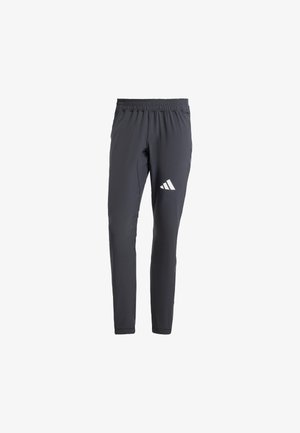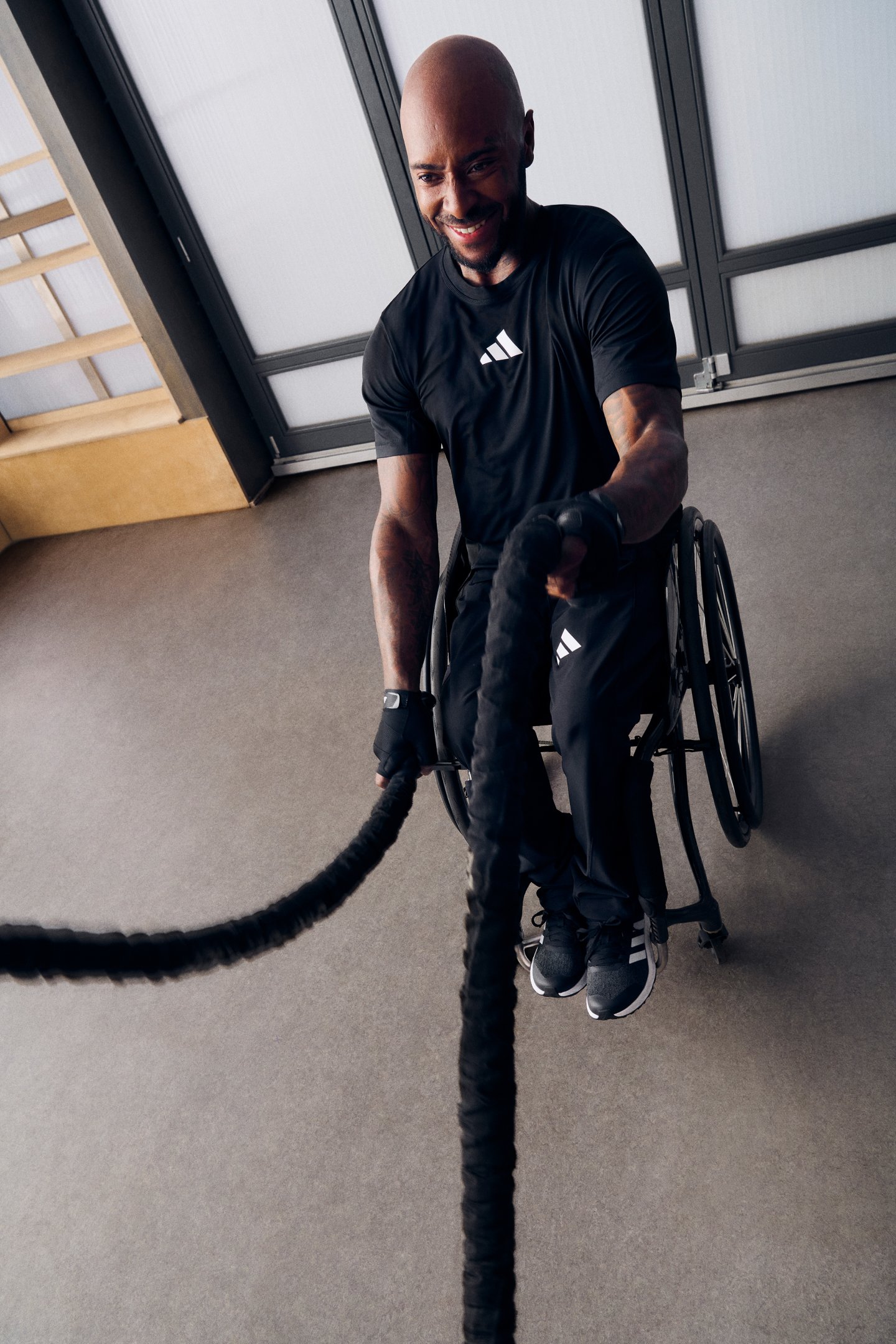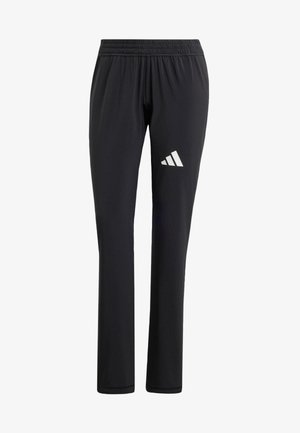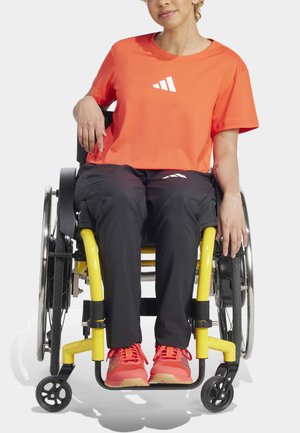
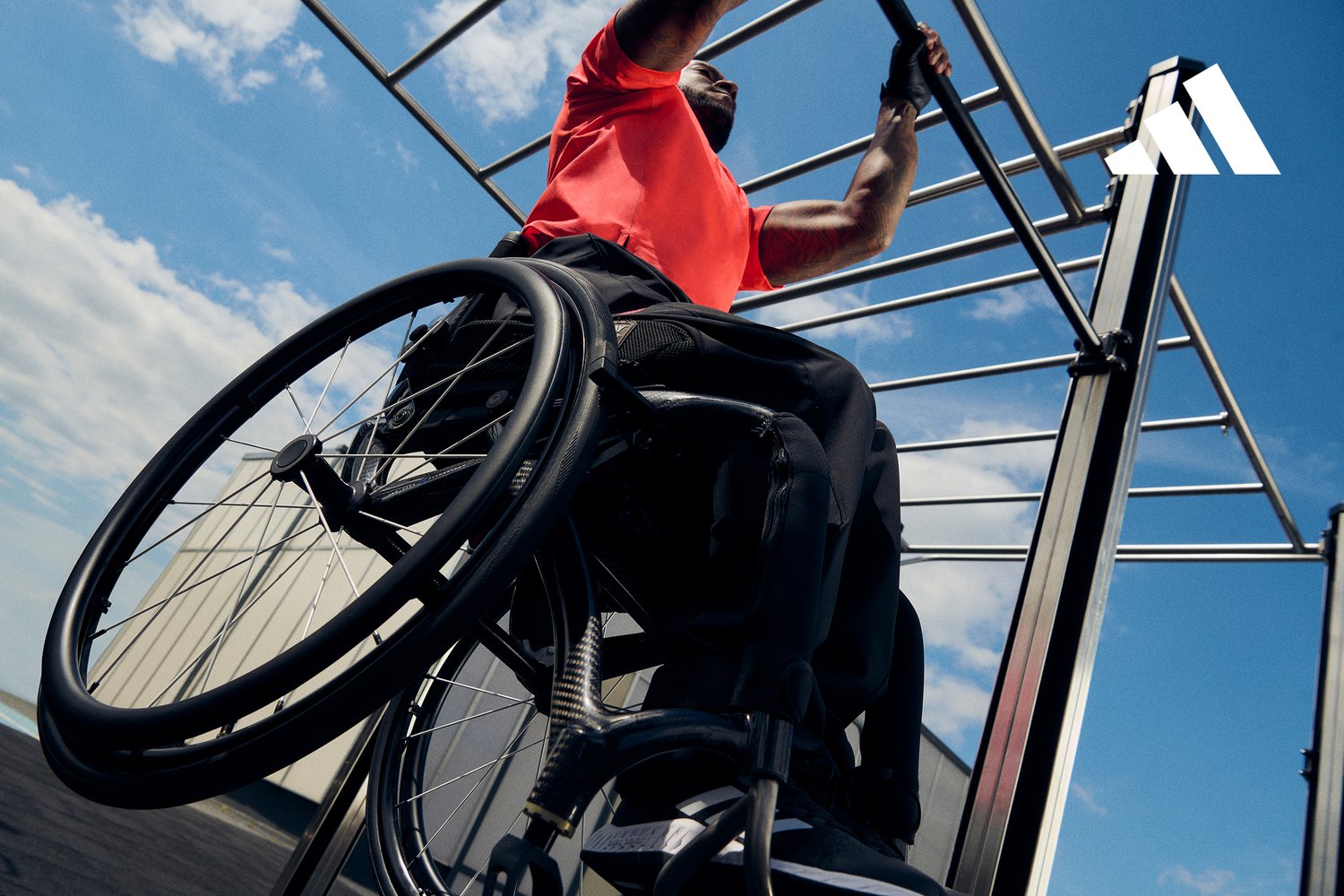
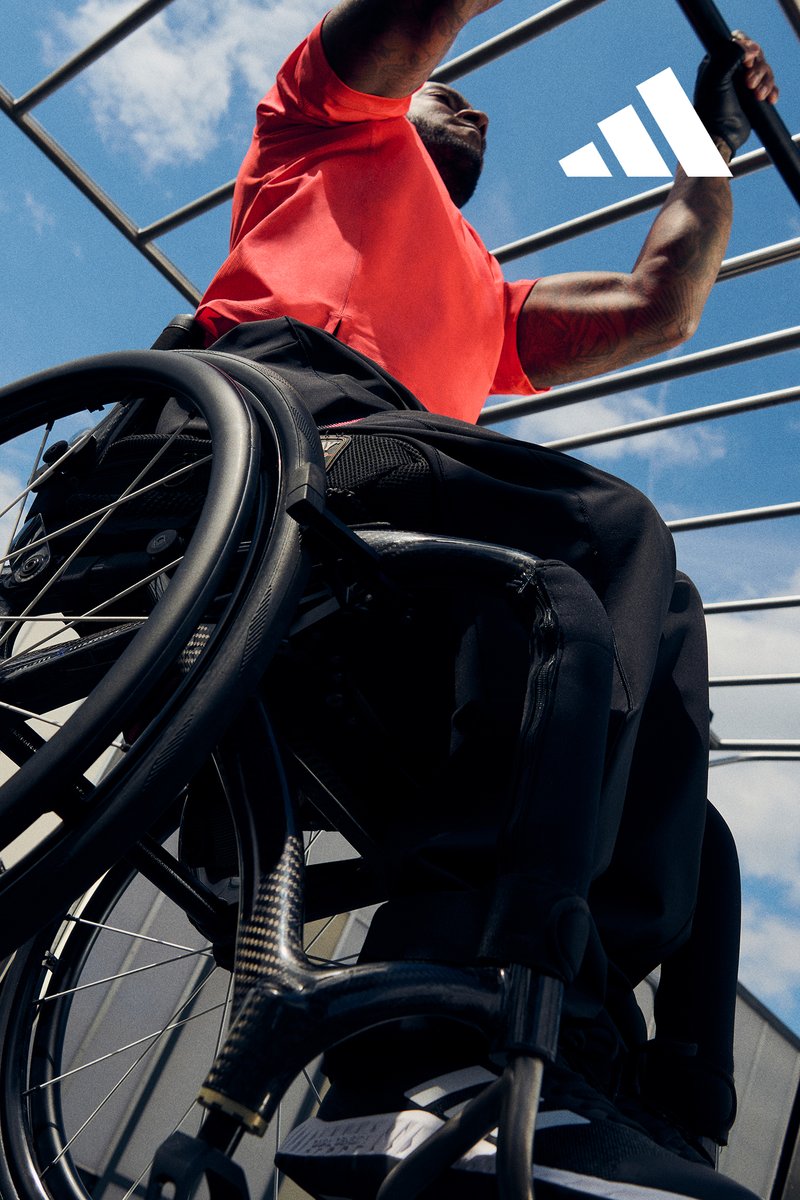
adidas adaptive wear
Changing outcomes with accessibility
“I push my mind and body to achieve my goals,” says Ashley Archer. The fitness enthusiast and former wheelchair racer opens up about his greatest sporting achievements, adidas’ first range of adaptive workout apparel, and overcoming obstacles.
With one major tournament after another, this season is the ultimate summer of sport. Watching the world’s best athletes reach new heights, break personal bests, or even world records is inspirational. It’s also the sort of inspiration needed to start or improve your personal training routine. While overcoming inner obstacles can be a challenge, your workout gear shouldn’t have to be. To help you focus on performing at your best, adidas has developed a range of performance apparel with adaptive features specifically designed for wheelchair users.
The line includes two adaptive workout tees and a pair of adaptive workout trousers for men and women, all designed for a customisable fit with reduced seams and breathable materials. But that’s not all. The pants have a pre-shaped pattern for a seated position, a high back and low front waist, and drawstrings at the ankles, allowing for adjustment. The t-shirts have neck loops to help with dressing and are made from moisture-wicking AEROREADY fabric to keep you dry, while a mesh back allows for airflow. All pieces come with a clean, timeless design, typical for adidas. It’s the combination of all of the above that Disabled athletes like Ashley Archer look for in workout apparel. “I want the clothes to look good, like everyone who goes to the gym. At the same time, I want them to have some features that I know will help me,” he tells us.
Archer has had a disability that affects him from the waist down since birth. In his 20s, he began to use a wheelchair full-time to preserve his spine under the advice of his doctor. That didn’t stop his sports ambitions though. Shortly after, he started to train for wheelchair racing and signed with Paralympic multiple gold medalist David Weir’s club. “I didn’t want to be someone to let my disability stop me from doing the same as everybody else,” explains Archer. “I always had this mindset to ‘Rise above limits’, and I push my mind and body to achieve my goals. I use my disadvantage to my advantage, and I think it’s working.” Speaking to us, he opens up further about his journey, greatest sporting achievements and the impact accessibility has had on his mindset.
Hi Ashley, we’re curious to hear about your sports journey. In an interview with the BBC, you said that British Paralympic wheelchair athlete David Weir inspired you to start wheelchair racing. Can you tell us more about that?
When I watched the Paralympics in London on TV and saw David Weir winning all the gold medals, I was very inspired because he proved that you can still live your life to the fullest. I remember thinking it might be a sport I could try, so I went to my local club about three miles away and did. One day, when I was training, a random guy spotted me and said he wanted to take me to Weir. Long story short, Weir saw potential in me, and I ended up signing to his club.
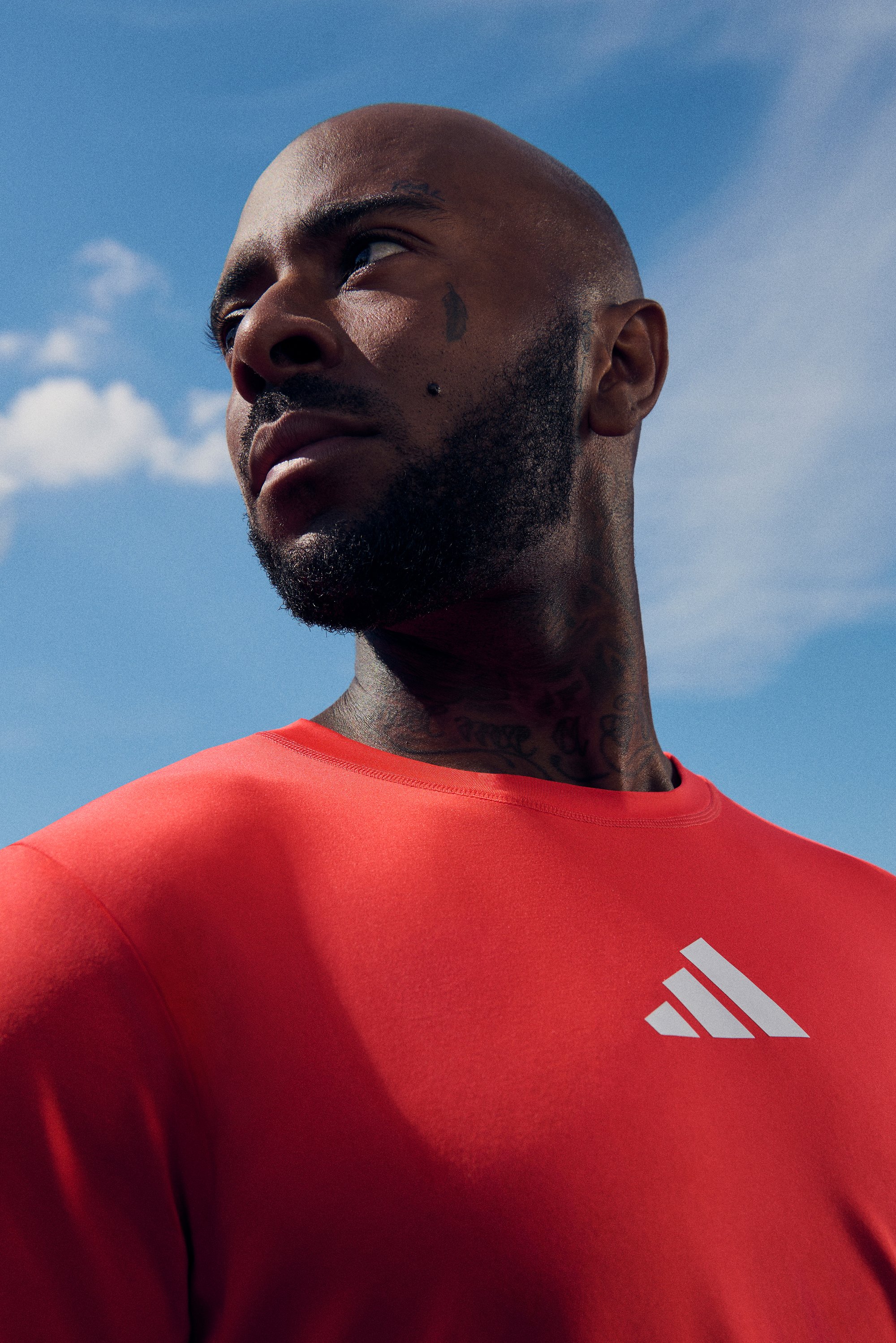
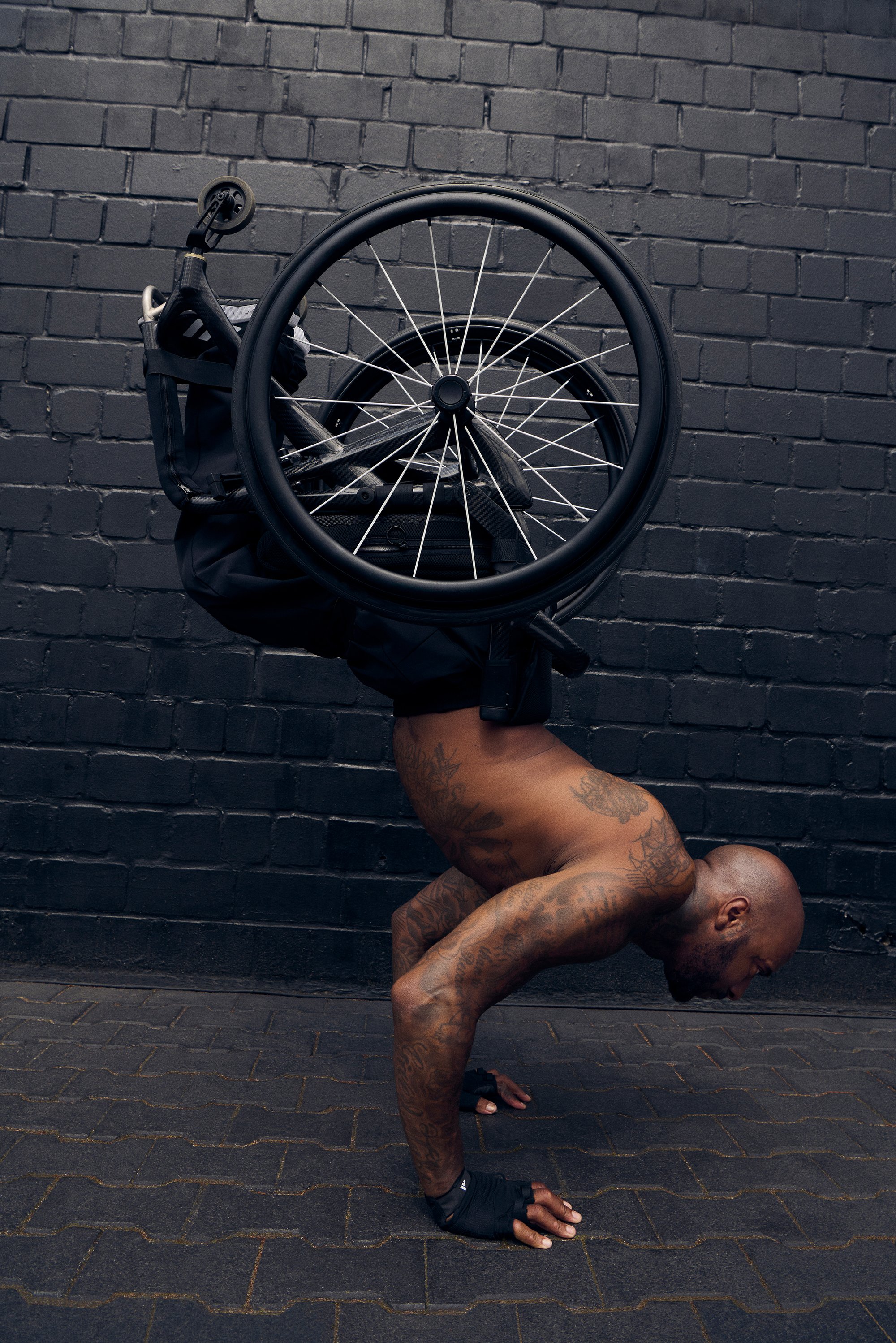
“ Rise above limits, and don’t let anything stop you. ”
- Ashley Archer
Would you also consider this one of your greatest sporting achievements?
Yes, I think my main one was being part of Weir’s team. For me, it was all about the mindset and being fully confident in being a wheelchair user, which I thought I never would be. I think many people in my position doubt themselves. Wheelchair racing gave me the confidence to be here, and that’s why it will always be important to me.
It sounds like the mental benefits of exercise play an essential role. What are the main benefits for you, both physically and mentally?
I need my top half to be in good shape to be able to do all the lifting in my job and push myself around. So, the physical benefits are a no-brainer, but the mental benefits are more important to me. When you get on the weights and go up each level, it’s a great mental boost, and you start to think, ‘OK, the bottom half of my body might not be the best, but the top half should be able to carry me through life’. I go to the gym when I’m frustrated or having a bad day. It’s all about you there — headphones on, music on, goals set, goals achieved. You come out feeling great.
Earlier, you shared what features you’re looking for when buying new workout clothes. Today, you’re wearing pieces from adidas’ adaptive range. We’re curious to hear your first impressions. Any highlights?
I didn’t realise it was adaptive wear, which is great, because, as I said, I like to be a bit more discreet. Again, anyone with a disability will tell you that they want to dress like everyone else, but have features that help them out, and these pieces have both. They’re stylish, fit very well, and are comfortable, which is very important to me. I’m impressed.
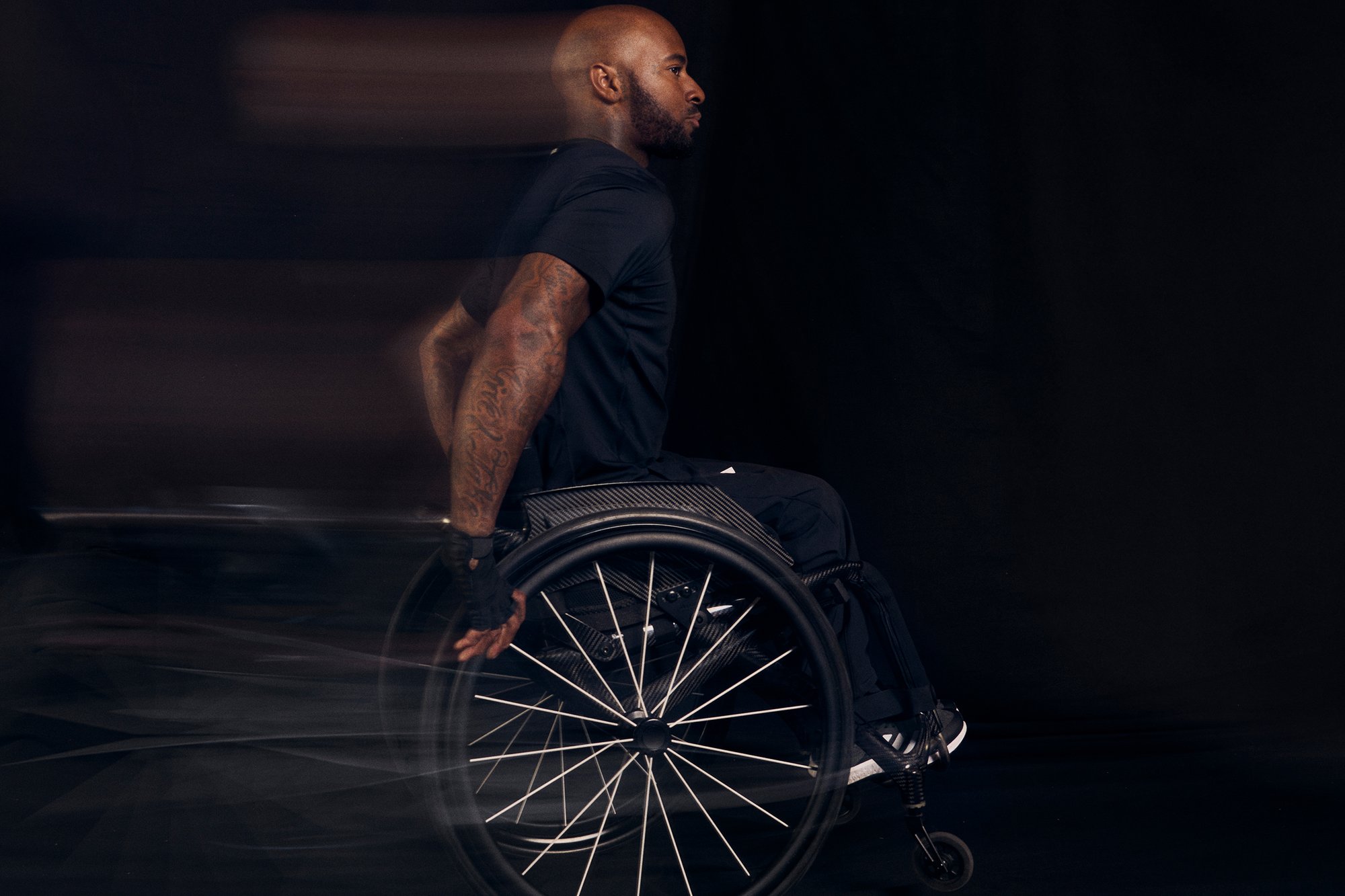
Going back to your sports journey, what were the biggest obstacles you had to overcome?
I think there are a lot of problems with sports in the UK, like funding charities and getting the right equipment for athletes. It’s very expensive. My racing chair costs about £6000 [equivalent to about €7062], and when competing all over Europe, you have to pay for hotels and travel. When you start to see non-disabled athletes getting support, you begin to feel like you’re not worth much or that your value is low. That’s when a lot of people stop doing the sport. I find it quite frustrating because there are many talented people.
What about the lack of gym accessibility? Has it ever affected your motivation to do sports?
Definitely. If you go to a certain gym and it’s not immediately accessible, you feel like everyone is watching you. It can take a lot of confidence for people to go to the gym in the first place. Imagine you’ve got yourself psyched up and got your gear ready, and then you get there, and the lift is broken. That has happened to me quite a lot. You get to a point where you either lose some of your pride and ask someone random to hold you and take you up the stairs or miss the gym session. That would really demotivate me to the point where I would buy most of the gym equipment and put it in my house.
ADIDAS ADAPTIVE WORKOUT APPAREL
Designed specifically for wheelchair users, the workout tees and pants have adaptive features, so you can focus on performing at your best.
ADIDAS ADAPTIVE WORKOUT APPAREL
Designed specifically for wheelchair users, the workout tees and pants have adaptive features, so you can focus on performing at your best.
Are there any short-term solutions that a wheelchair user who wants to exercise but doesn’t have an accessible gym nearby or the space to store equipment at home could take?
If you’re a wheelchair user like me and you want to get into wheelchair racing, use your manual wheelchair and push around. I used to do laps around the park sometimes, so start doing laps around your park or local area and build up your stamina — you’ll need it.
Now that we’re already discussing working out, could you tell us more about your training routine?
I’d do a bit of cardio and some pulling for 10 to 15 minutes. Nothing too stressful, just to warm up the joints, because, as you can imagine, I’m pushing the wheelchair all the time, anyway. So I do that, and as I’m only working the top half, it’s easy: shoulders, back, chest. I do lightweights and loads of reps and then see how I feel. If I want to go for a pump, I’ll do fewer reps but add more weight. I like to feel that ache.
Finally, what advice do you have for someone who wants to grow in sport and faces the same barriers as you do or did?
I always say, ‘mind over matter’. Rise above limits, and don’t let anything stop you. Sometimes, we let the lack of equipment or support stop us, and I went through that whole journey, but I knew I had something. Have a positive mindset, and find other ways of doing things, and I think you will be alright.
Want to discover more adaptive fashion? Explore style made easy and express yourself with ease.
